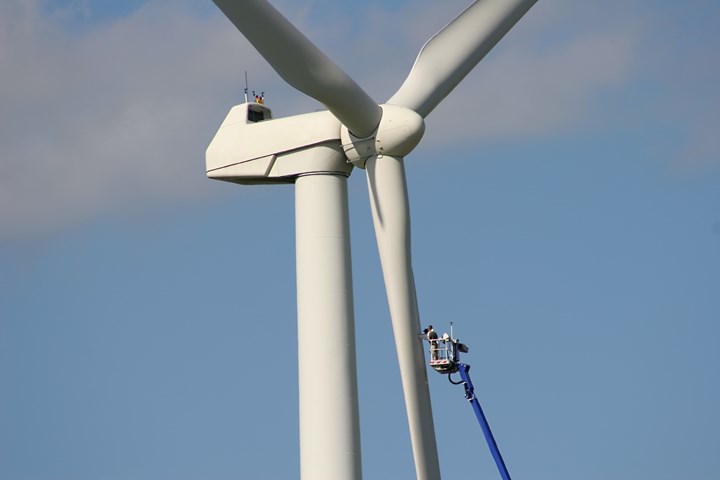Curtiss-Wright and Dolphitech team up on predictive wind turbine maintenance service
Combination of StressWave, PdP Pattern Recognition software with Dolphicam2 ultrasonic inspection for CFRP structures to provide end-to-end solution for damage detection, prevention and prediction.

Photo Credit: Getty Images
Curtiss-Wright’s Nuclear Division (Curtiss-Wright, Brea, Calif., U.S.) announced on March 26 that it has partnered with Dolphitech AS (Gjøvik, Norway) to provide predictive turbine maintenance and blade inspection services to the domestic and international wind market. This collaboration pairs Curtiss-Wright’s advanced StressWave and PdP Pattern Recognition software platforms with Dolphitech’s next generation Dolphicam2 ultrasonic inspection technology, which facilitates nondestructive inspection (NDI) on monolithic CFRP structures (it was used on the Airbus 350 aircraft) and provide users with a comprehensive view of their wind turbine blade health.
“This partnership provides the wind industry with a cutting-edge inspection solution unlike any other,” says Kurt Mitchell, vice president and general manager within the Curtiss-Wright Naval & Power segment. “Our collaboration with Dolphitech will allow us to offer a robust portfolio of technologies that improve turbine reliability and reduce downtime.”
Based in Gjøvik, Norway, Dolphitech developed the innovative Dolphicam2 to perform multi-material NDT using real-time, high-quality ultrasonic images. The Dolphicam2 unit is small, lightweight and easy to use, making it well-suited for a wide range of applications and environments, including integration with robotics and crawlers for remote deployment.
It is said that combining Curtiss-Wright’s StressWave and PdP software platforms with Dolphitech’s Dolphicam2 technology will create a wholistic, end-to-end solution for damage detection, prevention and prediction. StressWave “listens” for anomalies in their earliest stages. When a potential issue is detected, the Dolphicam2 is dispatched to investigate the problem. PdP collects inspection data over time and uses the information to identify patterns that predict future damage. The more data that is collected, the more refined this process becomes, reducing maintenance and inspection costs over time and improving the longevity of assets.
“As the wind industry continues to expand to deliver clean energy, this combined inspection solution will ensure the industry operates efficiently, extending the life of the turbines,” says Jason Smith, CCO of dolphitech.
Related Content
-
Nondestructive inspection methods available to composites manufacturers
An overview of composite laminate inspection techniques ranging from manual testing methods to more advanced, noncontact options.
-
Machine, equipment investment strengthens Ruckus Composites’ research, innovation
CNC services expansion, universal testing machines and advanced inspection enable Ruckus to delve deeper into the study and evaluation of carbon fiber damage, as well as nondestructive and destructive testing.
-
Innovation in ultrasonic inspection and nondestructive testing
With increasingly complex structural components working their way into aerospace programs, the need for versatility in inspection and testing capabilities is growing.
















